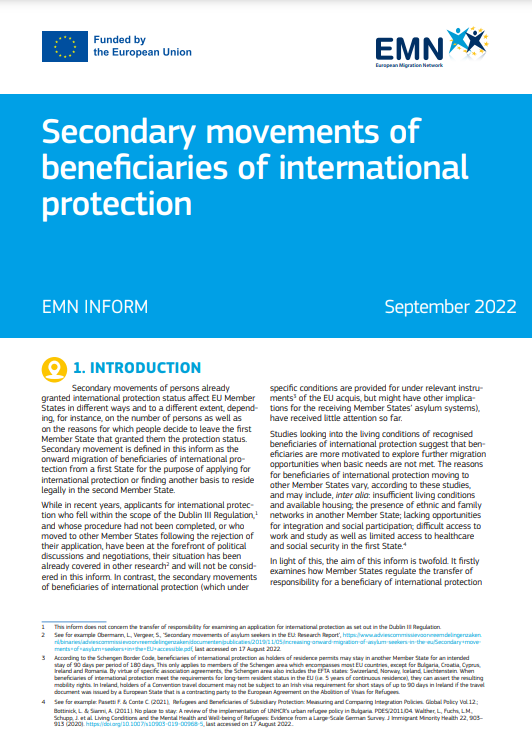How do Member States regulate the mobility and residence of persons already granted international protection status in another Member State? What are the applicable rules for transfer of responsibility of a beneficiary of international protection? The aim of this inform is to examine how Member States have regulated the transfer of responsibility for a beneficiary of international protection from the first State to the second State. It also explores the situation where beneficiaries of international protection, already recognised in a first State, lodge applications for international protection in a second State.
Secondary movement in this particular context refers to the onward migration of beneficiaries of international protection from a first State to a second one, to apply for international protection or to take up legal residence in the second Member State on other grounds (e.g. employment or study). The reasons for moving to another Member State vary and may include insufficient living conditions and available housing, the presence of ethnic and family networks in another Member State, lack of opportunities for integration, difficult access to work and study and limited access to healthcare and social security in the first State. This inform covers all persons with either a refugee status or subsidiary protection who are legally present in a second State because they have obtained, or are in the process of obtaining, a valid residence permit or have made a further application for international protection.
Under the current EU and international legal framework, several options exist for beneficiaries of international protection to travel and reside in another Member State, including short-term forms of mobility under the Schengen Borders Code, intra-EU mobility based on the Directive 2003/109/EC (‘Long-Term Residence’ Directive). However, EU law does not regulate the transfer of responsibility for beneficiaries of international protection. At national level, Member States apply different legal bases, including (i) the European Agreement on Transfer of Responsibility for Refugees (EATRR), (ii) national legislation and/or (iii) bilateral agreements, for the transfer of responsibility of beneficiaries of international protection.
The main challenge encountered by Member States related to secondary movements is the lack of a uniform legal base, as not all Member States have ratified the EATRR and few bilateral agreements have been put in place. This fragmentation of the legal and policy framework can negatively impact applicants, as different regulations and practices apply at national level. Moreover, some Member States reported communication challenges, with data and documentation sometimes insufficient to validate the international protection status.


